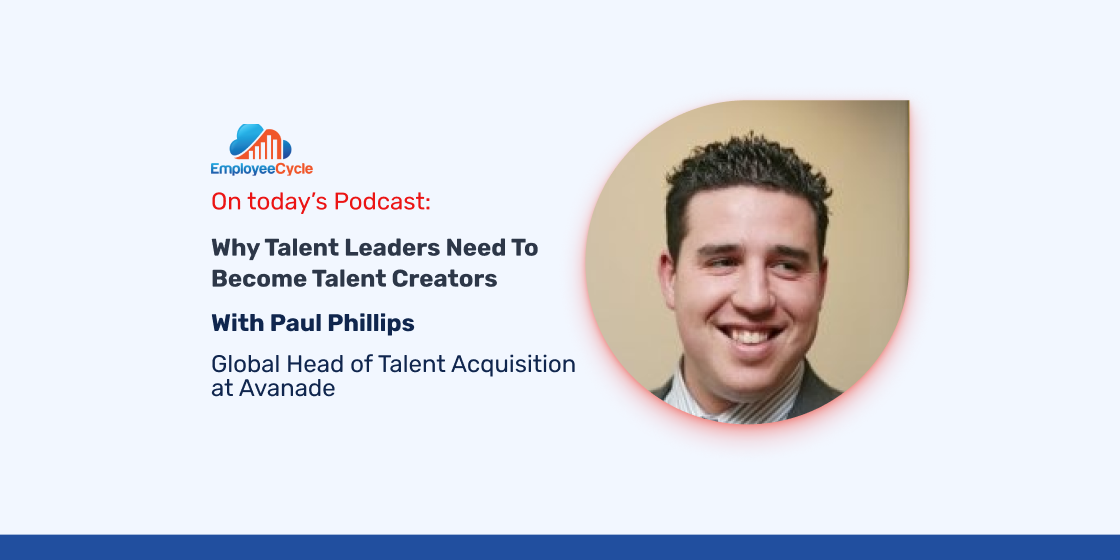On this episode of the Employee Cycle podcast, we have Paul Phillips, Global Head of Talent Acquisition at Avanade, joining us to discuss what a talent creator is (a bit of a provocative title!) and why it’s important for talent leaders to make this shift in a fast-changing world. After all, we don’t know what types of jobs we’ll need in the next 12-18 months.
What you’ll learn from this episode:
- First off, how did Paul Phillips get into the HR world?
- Secondly, what is a Talent Creator? And how does it affect the HR leader role?
- Next, the HR lifecycle has 3 main tenets: attraction, development, and retention. Where does talent creation fit in?
- Is transference of skills a squishy subject in your organization?
- Who is responsible for ensuring skillsets are where they should be in the workforce – Students? Parents? Educators? Coaches?
- Too many of us wait for others to do something different or change the rules of the HR game. Step up and lead the change. See the impact you will have!
How to find Paul Phillips and Avanade:
- Click here for Paul Phillips – LinkedIn
- Click here for Avanade – Website
- Click here for Avanade – LinkedIn
Avanade:
The early 2000s were an exciting time for IT. Digital technology was transforming our lives, and with each innovation, it became clear that digital was the future.
Avanade was born in this pioneering time. Created in April 2000 by two industry giants – Accenture and Microsoft – Avanade had one goal: to deliver innovative services and solutions to enterprises worldwide using the Microsoft platform.
Avanade has been named one of Newsweek’s Most Loved Workplaces, a ranking of the top 100 companies in the U.S. for employee happiness and satisfaction.
Music credits:
About Employee Cycle:
Employee Cycle is changing the way HR leaders use data! We change their disconnected employee data into a user-friendly, centralized, and real-time HR Analytics Dashboard. We help companies view, track, and analyze their workforce data in one place. As a result, companies avoid risks, save costs, and increase their employees’ lifetime value.












